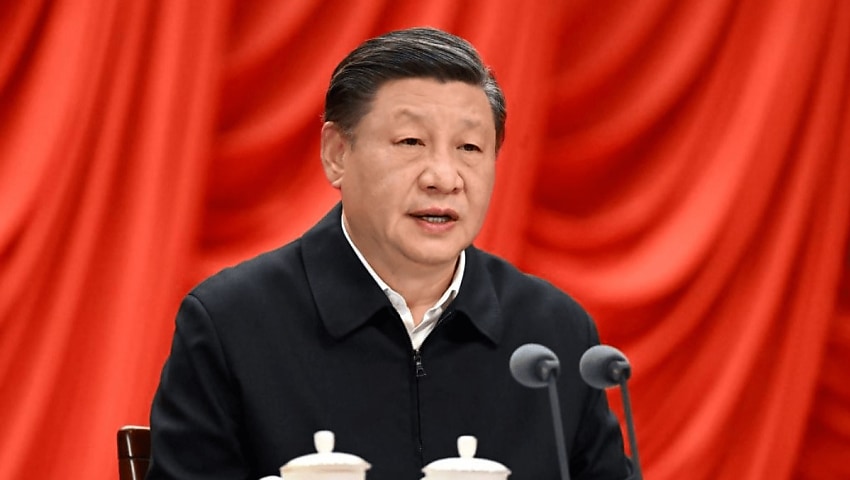In 2005, offensive realist John Mearsheimer wrote in The Australian that states in the Indo-Pacific would join a US-led alliance system out of concern for a growing and belligerent China. Just how did Mearsheimer’s projections fare and will actors in the region realign?
To continue reading the rest of this article, please log in.
Create free account to get unlimited news articles and more!
Speaking before the House select committee on the Chinese Communist Party, Ely Ratner, assistant secretary of defense for Indo-Pacific security affairs recently detailed how the United States’ alliance system in the Indo-Pacific has continued to go from strength to strength. In his address, Ratner even went as far as to detail that the US is tempting new prospective security partners to join the US-alliance system.
He points to deepening military relationships with countries like Australia, Japan, and India to illustrate that a more "capable" US military is increasingly “distributed” across the region, from where it can maintain power by pursuing a strategy of deeper integration with partners.
From US bombers stationed in US bases, to Marine Corp rotations in Japan, as well as access to four new “strategic locations” in the Philippines, Ratner maintains that the United States’ alliance model continues to uphold their deterrence strategy against belligerent rising powers.
“This outreach manifests itself in different ways with different countries. The United States supports Japan’s efforts to acquire new counterstrike capabilities,” a Defense advisory clarified.
“DOD has launched a major new technology initiative with India. The department is also working with countries across Southeast Asia to acquire asymmetric capabilities to counter Beijing’s coercive activities.”
Perhaps ambitiously, he even outlined that rather than constricting, the United States’ security strucuture in the Indo-Pacific is growing. He points, of course, towards the visit by Secretary of Defense Lloyd Austin III to Papua New Guinea, where he confirmed bilateral security will be on the table.
Despite Ratner’s bravado, it is hard for students of geopolitics to downplay the sluggish embrace of the US alliance system over recent years – even among some of the nation’s oldest allies.
Notably, Beijing believes the Republic of Korea to be the “weakest link in the US alliance network” and has sought to cleave it from the West, meanwhile, the Philippines (albeit briefly) sought to end its Mutual Defense Treaty with the US.
As nations balance, how can we expect the Indo-Pacific to change?
Famed realist thinker John Mearsheimer projected that many Pacific countries – even Russia – will be concerned by a growing China and adopt increasingly pro-United States positions.
In 2005, Mearsheimer opined that motivated by fear, that they “will do whatever they can to prevent it from achieving regional hegemony”.
“In the end, they will join an American-led balancing coalition to check China’s rise, much the way Britain, France, Germany, Italy, Japan, and even China, joined forces with the US to contain the Soviet Union during the Cold War,” Mearsheimer wrote for The Australian in 2005.
Sixteen years later, Jeff Smith, director of The Heritage Foundation’s Asian Studies Center, assessed Mearsheimer’s projections – observing that it hasn’t all come to fruition.
“For most of China’s immediate neighbours, balancing activity ranges from modest to non-existent. Some are even bandwagoning with Beijing,” he wrote.
“Most Indo-Pacific capitals have seen trade and investment ties with China grow exponentially over the past decade, despite a spike in regionwide security concerns.”
He observes that some countries, like Laos and Cambodia, have firmly joined China’s sphere of influence. Others, while quietly expressing apprehension, nevertheless have been swept up in China’s growth and have shown little interest in establishing obstacles to stifle the PRC’s regional influence.
“Soft balancers like Indonesia and Malaysia have registered some degree of concern about recent Chinese claims or behaviours and are taking modest steps to either enhance their defense posture vis-à-vis China or diversify their external security partnerships.
“At the same time, they are pursuing even greater political and economic engagement with Beijing.”
To Smith, a range of factors contribute to this malaise towards balancing the PRC.
“We identified several factors that are likely contributing to this under balancing, including globalisation and economic interdependence, strategic cultures averse to overt balancing strategies, free-riding, domestic political and economic considerations, and China’s own efforts to forestall balancing, among others.”
Since Smith’s analysis in 2021, it is reasonable to observe that more and more nations have become bandwagoners to China’s rise, not least in Australia’s northern approaches.
This can simply be observed by the willingness in which Pacific nations have changed recognition towards the Peoples’ Republic of China over the Republic of China (Taiwan). While a microcosm of broader competition, it nevertheless illustrates that smaller nations in the Indo-Pacific aren’t willing to engage in a balancing strategy.
Do our neighbours now just view China's rise to the role of global super power as a fait accompli?
Perhaps the answer is simpler than we think
Mearsheimer’s analysis in 2005 looked at great power competition holding domestic politics and internal affairs ceteris paribus. While the logic of Mearsheimer’s assertion remains wise, namely that a rising China will serve as a push factor for concerned nations to join US-led international partnerships, it could not have foretold that US domestic instability would by no means serve as a pull factor. Simply, there is no pull factor that gives assurances to countries that they should take a gamble and establish a future security partnership with the US.
Why would middle powers risk upsetting one pole in a bipolar world and cast their lot with a nation in which cities are routinely burnt to the ground? Or where formerly liberal metropolises look more and more post-apocalyptic by the day?
Balancing requires actors to leverage both push-and-pull factors. Until the United States can demonstrate why more middle powers should take the gamble and balance a rising China, we will continue to see the increasingly warm acceptance of Chinese hegemony in the Indo-Pacific.
Get involved with the discussion and let us know your thoughts on Australia’s future role and position in the Indo-Pacific region and what you would like to see from Australia's political leaders in terms of partisan and bipartisan agenda setting in the comments section below, or get in touch with
Liam Garman
Editor – Defence and Security, Momentum Media

 Login
Login








